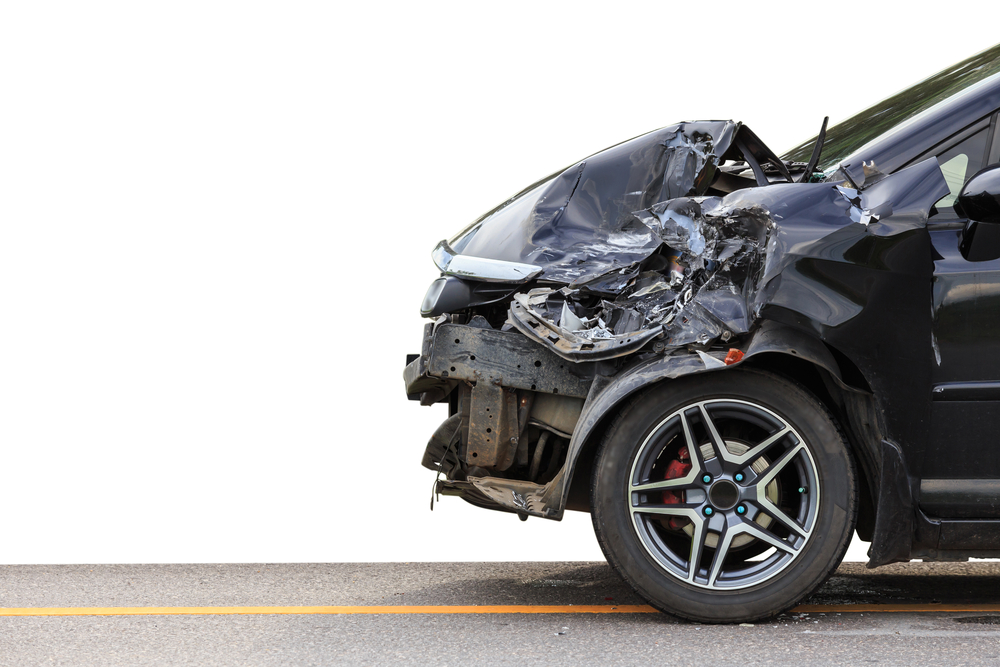Surviving a Car Accident in Philadelphia

Unfortunately, car accidents can happen at any time and usually come as a total shock. We’ve seen many personal injury clients with excellent driving records who have done everything right but still face debilitating injuries. The truth is we never know when another motorist’s negligence or recklessness will leave us facing a life-or-death moment.
After representing hundreds of auto accident victims, our legal team appreciates the need for drivers to understand how they can increase their chances of surviving a high-speed auto accident. There are recognized techniques and strategies you can utilize to reduce the chances of severe injuries before you get behind the wheel, during the event, and afterward.
What To Do Before a Car Accident in Philadelphia
The surest way to survive a collision is to avoid being in one. This may sound axiomatic, but the truth is drivers sometimes get too comfortable behind the wheel and forget the principles of defensive driving. You can avoid becoming a victim in many situations by always paying attention, keeping a safe following distance, and anticipating and avoiding potential dangers.
However, no defensive driving technique can save you from every collision. Sometimes natural occurrences, such as black ice, can cause your vehicle to spin out of control. In other cases, another driver's decision to text while behind the wheel results in a high-speed vehicle barrelling into you at a stoplight. We cannot account for all the forms of negligence by other motorists.
But by taking the following precautions, you can minimize the impact on you and your passengers:
Buckle Up
While this advice may bring to mind a broken record, a surprising number of people still neglect to buckle up. Often, they decide they can forget the seatbelt because they are going a short way or take it off momentarily, such as when reaching for something at the wrong time. Unfortunately, the consequences are often deadly.
Research shows that seat belts reduce incidents of severe car crash injuries and deaths by about 50%. It’s hard to argue with those odds. Seat belts make the most difference, mainly because they provide the support you need at the moment of the accident, when you may have little or no control over what happens.
For maximum protection, secure your seat belt low on your hip bones. Also, align the shoulder belt with the center of your chest.
Drive the Safest Car Possible in Philadelphia
Safety continues to improve every year. With so many consumers demanding safer transportation, manufacturers are in a contest to offer safer vehicles at competitive prices.
Just look at the difference in safety since the days when manufacturers didn’t even include safety belts. Now we have airbags, crumple zones, side-curtain airbags, and more. To prevent accidents from happening, many manufacturers offer automatic braking and lane-departure warnings.
While these features are important, you should not let them be a replacement for a solid crash test rating. You may be unable to avoid an accident caused by another motorist’s mistake, and a high crash rating can save your life.
Secure Possible Projectiles
Projectiles are one of the most overlooked causes of severe injury and fatalities. This occurs because the things in your vehicle that can fly at you in a crash are typically considered harmless. For example, rocks collected on an outing, sports equipment, laptops, and luggage have all caused people serious harm in accidents.
Remember the laws of physics. When your vehicle crashes, it stops instantly, but everything not nailed down continues at high velocity. That’s why you wear a safety belt. At 60 mph, the most innocuous items can turn into instruments of death. For example, a can of chicken noodle soup in your grocery bag in the back seat can kill you when flying at you at 60 mph.
An often overlooked safety habit is traveling with as few items in the passenger compartment as possible. After each trip home, make it a point to remove all unnecessary items. Also, throw away junk whenever you make a stop.
When driving with items that can become projectiles, stow them safely. Your trunk or covered back storage area is the safest location. If you must place items in the rear seating area, tuck them in the wells behind the seats. When transporting goods in an SUV or minivan, secure them with a cargo cover or net to secure items in the back of SUVs and minivans.
Carry an Auto Survival Tool and First Aid Kit
Investing in an auto survival tool and first aid kit can save your life. Buy one that contains a seatbelt cutter and a glass breaker. These are life savers if trapped in a burning vehicle. Also, find a first aid kit that can help you stop bleeding. Severe bleeding can kill before emergency services arrive.
During a Car Accident in Philadelphia
Some accidents happen so fast that you have no chance to react. If you find yourself in this unfortunate situation, you’ll have to rely on your preparation and your action afterward. But when you can see the collision coming, even for just a few precious seconds, you have a chance to take evasive and mitigating actions that can save your life and the lives of your passengers.
Trust Your Anti-Lock Brake System
Anti-lock braking systems (ABS) are excellent safety features, and most vehicles on the road today have them. When you brake suddenly, the ABS automatically pumps the brakes much faster than a person can. This pumping action allows the vehicle to stop more efficiently.
Trust this system by holding the brake pedal firmly and allowing the ABS to do the pumping. Vibration in the pedal means the system is working. If possible, keep the wheels pointed forward, which helps the system work more effectively.
Slow Down
Speed kills. It is the #1 most deadly factor in auto accidents. In essence, the faster your vehicle or the other one is traveling, the worse the impact. When you see an accident is imminent, slowing down may be your only defense.
Take Evasive Action
Dodging an accident is the most effective defense. If possible, swerve away from the danger; just be careful not to move into a worse situation. While you generally want to hit the brake to minimize or avoid a crash, you may need to accelerate away from danger to avoid it. For example, if another vehicle is on a trajectory to side-swipe yours, you may be able to accelerate enough to get out of its path.
Control Your Vehicle
Staying in control of your vehicle gives you more opportunities to slow down or maneuver the vehicle. The last thing you want is for your car to careen out of control, leaving you unable to stop or take evasive action. For example, you always want to prevent your vehicle from skidding and spinning, leaving you at the mercy of whatever is in your vehicle’s path.
Should your car begin to skid, steer in the skid’s direction. Avoid the temptation to brake or accelerate until the tires regain traction. Keep a firm grip on the wheel and stay calm.
Avoid Sudden Movements
Quick, jerky movements can cause your vehicle to spin out of control. Respond to emergencies quickly but keep your movements measured and smooth. Jerking the steering wheel or slamming blindly on the brakes can do more harm than good if you lose control.
Mitigate Imminent Collisions
In some situations, you may find your vehicle on a collision course. When accidents are imminent, aim for the object that will do the least damage. For example, if presented with a choice of hitting an oncoming vehicle or bushes, aim for the bushes. Avoid head-on collisions with other vehicles, trees, and other stationary objects.
Remain in a Normal Driving Position
Sometimes, our bodies betray us. When facing a collision, people naturally tend to hunch or duck. These motions can worsen injuries in a vehicle crash because safety systems are designed to protect people in their normal driving or riding positions. For example, moving your arms in front of your face causes you to punch yourself in the face when the airbag deploys.. For that reason, keep your hands below 10 and 2.
After a Car Accident
The collision may have already happened, but that does not mean you are safe. Passing vehicles, fire hazards, and worsening injuries can cause further injury or death. Take these steps after an accident:
Call 911
The sooner you receive rescue and medical help, the better the chances of a positive outcome.
Leave the Vehicle If You Can, and It’s Safe
Hopefully, you are not pinned in your vehicle. If not, assess whether it is safe to exit. You may need to remain if oncoming high-speed traffic is a threat. Also, you may have injuries that preclude movement.
If your car is drivable, move to a safe location.
Reduce Fire Risk
To reduce fire risk, turn off the engine and extinguish any cigarettes. These actions reduce the chances of igniting leaked flammable materials.
Apply First Aid
If able, apply first aid to yourself and others. If an injured person has severe bleeding, apply pressure directly to the area.
Get Out
If you land in water or a fire erupts, you must immediately exit the vehicle. Open your window immediately if you land in water and waste no time getting free. Fires consume cars quickly, so exit at all costs. Use your safety tool or other means to break windows if the doors are stuck and exit even if injured or you sustain cuts climbing from the vehicle.
Auto accidents cause some of the most severe injuries and tragic deaths. Being as safe as possible while on the road dramatically reduces the chances of becoming a statistic. While you cannot avoid all accidents, taking precautions and making sensible choices when one occurs increases the chances of avoiding serious injury.
Consult with a Philadelphia Car Accident Lawyer
Mattiacci Law’s litigation team has seen countless auto accidents that result in terrible injuries. You may be entitled to compensation for all you have suffered. Contact Mattiacci Law for a free consultation.
Related Content: How Much Is the Average Car Accident Settlement in Pennsylvania?
